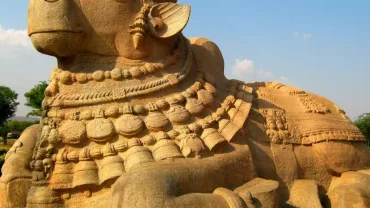- Blog
- 04 Sep 2021
Veerabhadra Swamy Temple – Lepakshi
About Veerabhadra Swamy Temple – Lepakshi is culturally and archaeologically significant as it is the location of shrines dedicated to Shiva, Vishnu, and Virabhadra which were built during the Vijayanagara Empire period (1336–1646). The temples are the location of mural paintings of the Vijayanagara kings Kannada inscriptions. It was built in 1530 AD and was also […]
